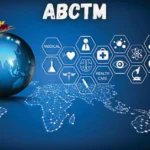Healthcare EDI electronically automates routine transactions—enrollment, eligibility checks, claims—by swapping standardized documents among payers, providers, pharmacies, and clearinghouses. Due to the confidential nature of protected health information (PHI), safeguarding these transactions is not only essential for HIPAA compliance—it’s vital for maintaining patient trust, precluding expensive breaches, and maintaining regulatory credibility in India’s changing healthcare environment. This blog discusses:
- Why EDI in Healthcare is key to operational efficiency
- The most prevalent healthcare EDI transaction types
- Security measures and regulation requirements
How EDI 834 Services and EDI Managed Services companies like A3Logics provide end‑to‑end protection
There’s so much more to discover—browse our related posts!
2. The Significance of EDI in Healthcare
The healthcare industry generates a lot of data on a regular basis and EDI helps in streamlining this data. EDI has a significant role to play in healthcare. Here are some of the benefits of EDI in healthcare:
Simplifying Administrative Workflow
Slow, error-laden, and expensive manual paper processes are converted to electronic workflows by EDI in seconds, not days—from claims submission to remittances and prior authorizations—reducing turnaround time and eliminating manual processes.
Improving Stakeholder Communication
Providers, payers, and clearinghouses have different systems. EDI bridges this divide with standard formats, sending clean, consistent information—so everyone “speaks the same language.”
Decreasing Errors and Paperwork
Mistakes from manual entry result in denials, rework, and delays. EDI transactions following standardized protocol significantly minimize these errors, resulting in cleaner data streams and less administrative rework for agents and providers.
3. Major Healthcare EDI Transactions
HIPAA-compliant EDI requires some fundamental EDI transaction sets necessary for contemporary healthcare interoperability, here are some of the major types of healthcare EDI transactions:
| Transaction | Use Case |
| 837 | Healthcare claim submission (professional/institutional) |
| NCPDP | Retail pharmacy claims |
| 834 | Enrollment and coverage maintenance (link with EDI 834 Services) |
| 820 | Group premium payment remittance |
| 270 | Eligibility and benefits inquiry |
| 271 | Eligibility and benefits response |
| 276 | Claim status inquiry |
| 277 | Claim status response |
| 278 | Prior authorization / service review inquiries |
837 – Healthcare Claim Submission:
Used by healthcare providers to submit medical claims to payers for reimbursement; supports both professional and institutional claims.
NCPDP – Retail Pharmacy Claims:
Standard used for processing pharmacy claims and drug benefits in real time, facilitating fast approvals and payments.
834 – Enrollment and Coverage Maintenance:
Used by employers or payers to enroll individuals in a health insurance plan and communicate changes like terminations or updates.
820 – Premium Payment Remittance:
Used to transmit payment details related to health insurance premiums, often sent from employers to insurers.
270 – Eligibility & Benefits Inquiry:
Enables healthcare providers to check a patient’s insurance coverage and benefits before providing services.
271 – Eligibility & Benefits Response:
Sent by the insurer as a response to the 270, detailing the patient’s eligibility status and benefit details.
276 – Claim Status Inquiry:
Used by providers to check the status of previously submitted claims for payment or denial reasons.
277 – Claim Status Notification:
The payer’s response to the 276 inquiry, sharing updates like claim approval, rejection, or pending status.
278 – Prior Authorization / Service Review:
Sent by providers to obtain approval from payers for medical procedures or services before treatment begins.
4. Navigating Challenges in Healthcare EDI
With the pros of adopting EDI in healthcare, it can offer its own challenges. Here are some of the common challenges that can be faced while integrating EDI in healthcare.
Complex Regulatory Requirements
Alongside HIPAA (in US exports), Indian insurers have to adhere to data localisation and privacy standards. Strong access controls, encrypting PHI in transit and at rest, and strict audit logs are an absolute minimum.
Secure Patient Data
Missing or antiquated encryption, key management, or authentication products can leave PHI vulnerable. Healthcare EDI Solutions should use TLS 1.2+ or AS2 protocols, secure credential vaults, and automate certificate refresh to prevent expirations.
Interoperability & Legacy Integration
Most Indian hospitals and TPAs use legacy or homegrown systems. Secure EDI Transactions in Healthcare needs data normalization and secure API gateways to integrate old systems with cloud-native EDI without revealing vulnerabilities.
Staff Training and Vigilance
Without proper training on HIPAA-like EHR management, phishing attacks, and secure login mechanisms, teams can nullify the most secure EDI stack. Regular training, role-based access, and endpoint monitoring are necessary.
5. Most Important Advantages of Secure EDI for Healthcare
The need for secured transactions are a must, especially in healthcare that is driven by various regulatory compliances. Here we have identified the top advantages of secure EDI for healthcare.
1. Operational Efficiency
Secure EDI facilitates real-time, automated data exchanges among healthcare stakeholders like providers, payers, and clearinghouses. This removes the burden of manual data entry, lessens communication delays, and accelerates processes such as eligibility verification, claims filing, and remittance advice. Providers thus become able to treat more patients with higher accuracy and speed.
2. Data Accuracy & Consistency
With HIPAA-compliant formatting and built-in validation processes, EDI integration in healthcare systems reduces manual errors in handling data. It standardizes vital information such as patient demographics, treatment codes, and insurance information. Proper data means less claim denial, quicker settlements, and improved provider-payer coordination—directly influencing revenue cycle efficiency.
3. Cost Reduction
By streamlining repetitive work and reducing paperwork, secure EDI saves healthcare organizations labor and administrative costs. Reduced errors translate to fewer rework cycles and denied claims. Moreover, less physical documentation and mailing costs result in lower overall operation costs.
4. Automation-Driven Productivity
Secure EDI automates business-critical processes like insurance eligibility verification, prior authorization, and claim reconciliation. Administrative staff are free to work on high-value activities like enhancing patient experience and taking data-driven decisions, instead of dealing with forms and faxes.
5. Improved Data Security
Security is the topmost priority in the exchange of healthcare data. Secure EDI solutions employ encryption, digital signatures, and secure transmission methods such as AS2 and SFTP to safeguard electronic Protected Health Information (ePHI). These processes confirm data integrity, confidentiality, and non-repudiation, adhering to HIPAA and HITECH specifications.
6. Embedded Auditability
All EDI transactions are timestamped and logged, creating an entire audit trail. This facilitates regulatory compliance and eases internal examinations or external auditing. Organizations can track who looked at data, when, and what changes were implemented—enhancing transparency and accountability.
7. Scalable & Flexible Architecture
Cloud-based secure EDI systems are readily scalable as data volumes, users, or new transaction types increase. They provide flexibility in interoperability to support varying systems such as EHRs, CRMs, or pharmacy platforms. This provides consistency and responsiveness as healthcare practice grows or regulations change.
8. Speeded Patient Experience
Through real-time data exchange, providers receive quicker approvals of services and quicker access to patient eligibility or claim status. This immediately improves patient satisfaction by shortening waiting times for treatment and cutting through confusion over coverage or billing, ultimately helping in a smoother care experience.
Secure EDI is more than a compliance or operational solution—it’s a strategic benefit for innovative health care providers that seek to provide high-quality, cost-effective, and secure care in the data-enabled environment of today.
6. How Does EDI Work in Healthcare?
Here is how EDI works in the healthcare industry.
a. EDI Mapping
Internal data formats—EHR, PMS, billing—are translated by connectors into standard HIPAA sets such as 837 or 834 through mapping templates that guarantee each field aligns with standard specifications.
b. Formatting, Testing & Validation
All transactions are tested and checked for HIPAA content, accuracy, and formatting prior to go-live. Strong test suites guarantee performance under live environments and minimize downtime.
c. B2B File Transfer
Secure protocols—AS2, SFTP, FTPS, HTTP/S—provide end-to-end encryption and non-repudiation during transfer, with confirmations of delivery/receipt and anticollision provisions.
d. EDI Integration
EDI integrates comprehensively with back-office systems such as EHR, ERP, Pharmacy, and CRM systems through APIs or message buses to guarantee smooth patient information exchange across the ecosystem.
7. Why A3Logics for Healthcare EDI Solutions?
Looking for a trusted EDI solution? A3Logics is your leading partner for all your EDI service needs. With us you get 21 years of expertise. We can offer you:
Experience in HIPAA-Compliant EDI
A3Logics provides secure, compliant EDI systems based on encryption, auditability, and role-based access control—adapted to global healthcare and Indian regulatory requirements.
EHR/EMR Integration Expertise
Our solutions integrate with FHIR & HL7 platforms while preserving rigorous EDI processes, facilitating quick, precise claim submission and enrollment notifications.
Scalable Managed Services
Our solution unifies EDI 834 Services and EDI Managed Services, taking care of setup all the way through to support. We facilitate 24×7 availability, version updates, and ready scalability as your transaction levels expand.
End-to-End Security
All elements—data mapping and messaging, storage—adhere to ISO 27001 standards, SOC 2 compliance, and applicable global privacy models for seamless protection.
Cost-Effectiveness
Hybrid EDI deployments with optimized cloud deployments minimize infrastructure expenditure with enhanced reliability and auditing.
8. Conclusion
Secure EDI is not merely an operational solution—it’s a strategic one. With Indian health insurance ecosystems expanding and evolving in line with international norms, organizations need to ensure:
- Strong encryption and transport-layer security
- Secure identity and access management
- Real-time compliance and audit features
- Cloud-native scalability and agility
- Regular staff training and proactive governance
Through the implementation of best practices and collaboration with seasoned EDI providers such as A3Logics providing EDI 834 Services and EDI Managed Services, health insurers, TPAs, and providers can make EDI a secure backbone supporting automated, compliant, and robust healthcare delivery.
Don’t miss out on more great reads—click through our featured posts!






